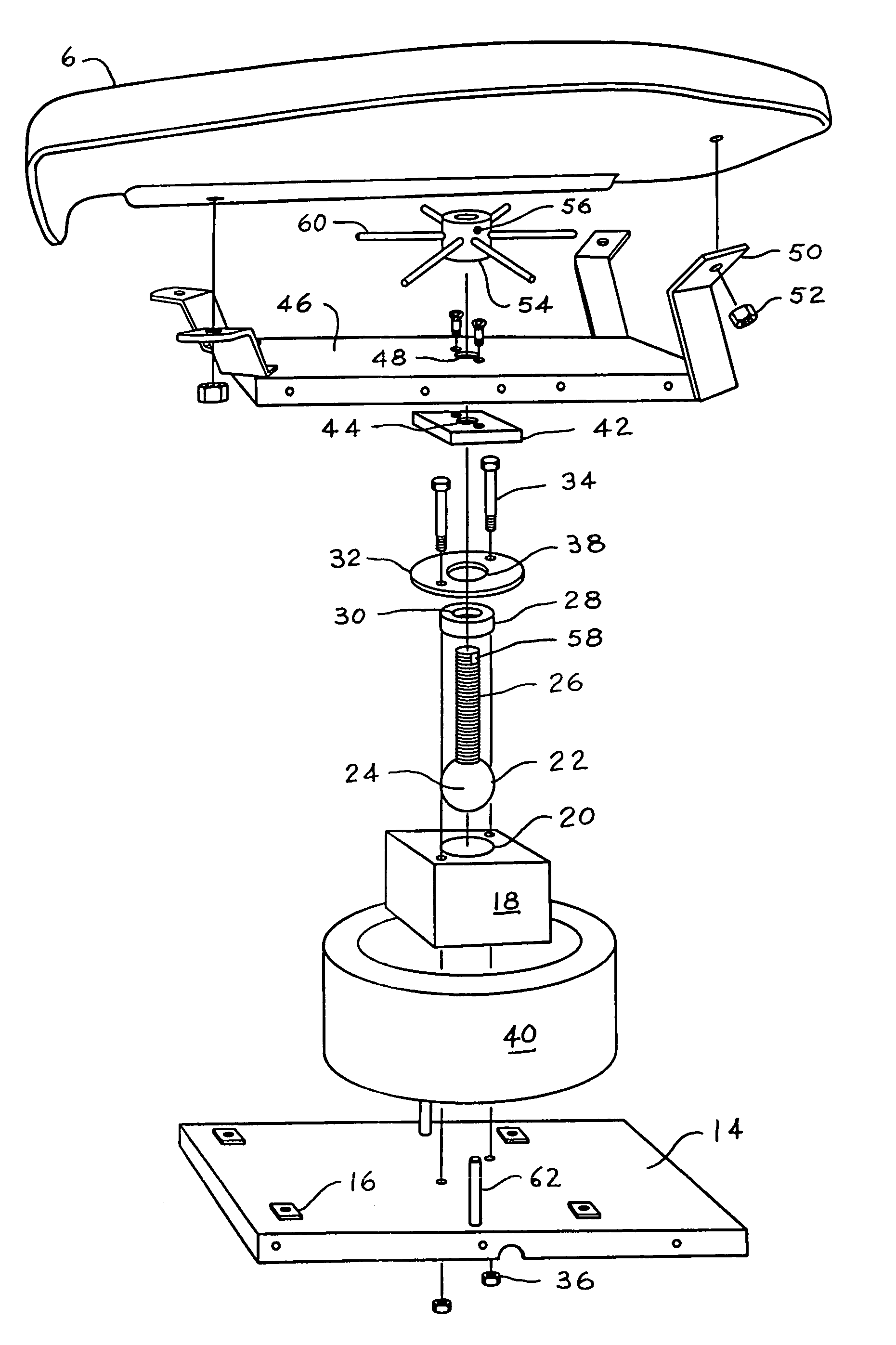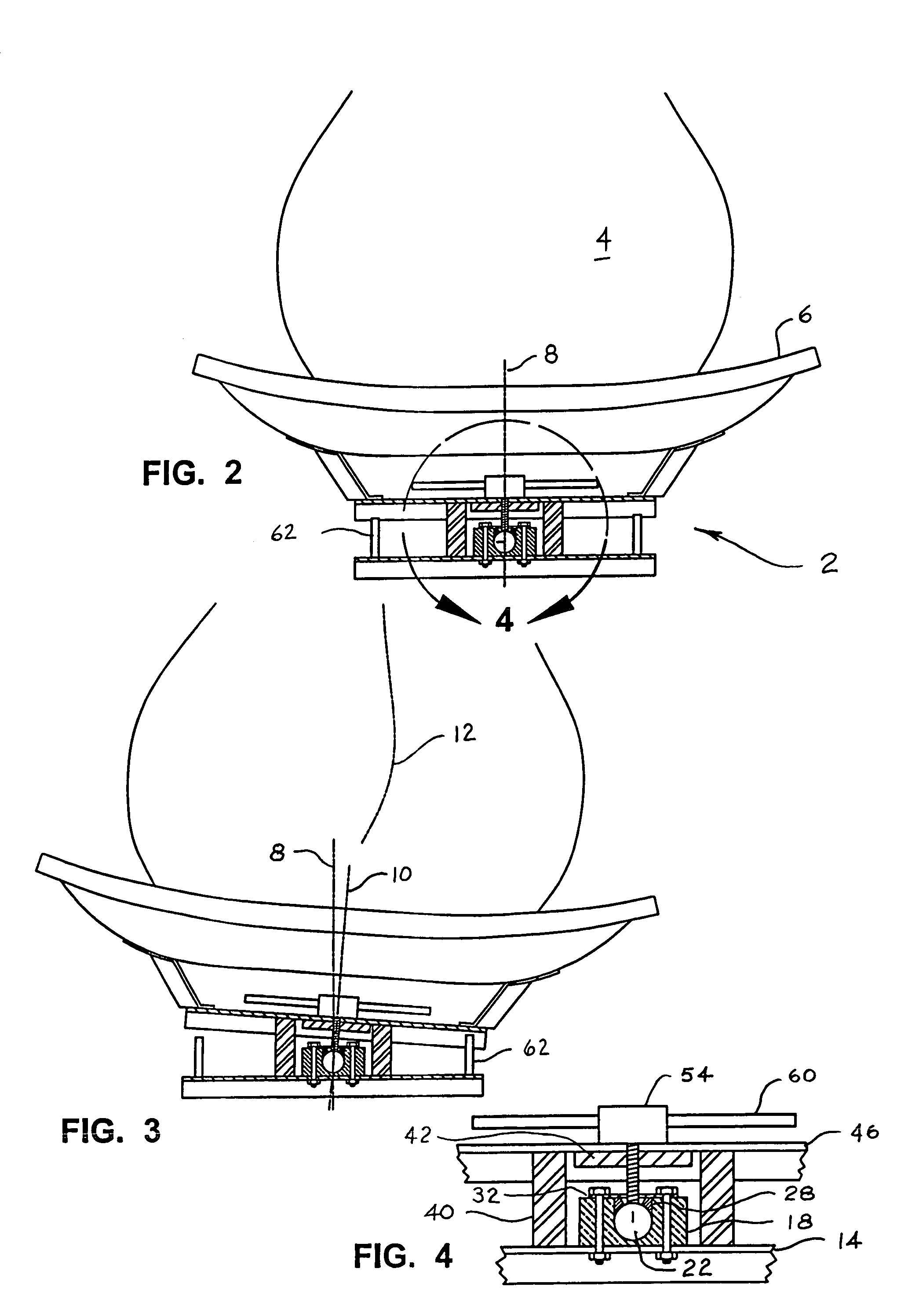Lumbar flexing seating apparatus
a seating apparatus and lumbar region technology, applied in the direction of chairs, movable seats, machine supports, etc., can solve the problems of not being able to meet the needs of modern humans for a longer life span, the lumbar cage structure is not well suited for the longer life span of modern humans, and the lumbar region is not as ruggedly supported. , to achieve the effect of improving the posture of the seated person and limiting the degree of tilting the sea
- Summary
- Abstract
- Description
- Claims
- Application Information
AI Technical Summary
Benefits of technology
Problems solved by technology
Method used
Image
Examples
Embodiment Construction
[0028]Referring to FIGS. 2 and 3, the lumbar flexing seating apparatus of the invention is generally designated 2 and is shown from the rear with a person 4 seated on, and supported by, a buttocks seat 6. With good posture and when seated upright the person's center of gravity (not shown) would be generally in line with the vertical axis 8 of the seating apparatus 2. As used herein, the terms “vertical,”“horizontal,”“upper,”“lower,”“top,”“bottom” and “base” are directional references arbitrarily selected for clarity of understanding, and as used herein “vertical” refers to its normal usage as a line, or one parallel thereto, extending through the center of the earth and “horizontal” referring to its normal usage as a line perpendicular to a vertical line. The terms “upper” and “top” refer to the direction or side of the seating apparatus on which a person would normally sit, and “lower,”“bottom” and “base” refer to the direction or side of the apparatus which faces the supporting st...
PUM
 Login to View More
Login to View More Abstract
Description
Claims
Application Information
 Login to View More
Login to View More - R&D
- Intellectual Property
- Life Sciences
- Materials
- Tech Scout
- Unparalleled Data Quality
- Higher Quality Content
- 60% Fewer Hallucinations
Browse by: Latest US Patents, China's latest patents, Technical Efficacy Thesaurus, Application Domain, Technology Topic, Popular Technical Reports.
© 2025 PatSnap. All rights reserved.Legal|Privacy policy|Modern Slavery Act Transparency Statement|Sitemap|About US| Contact US: help@patsnap.com



